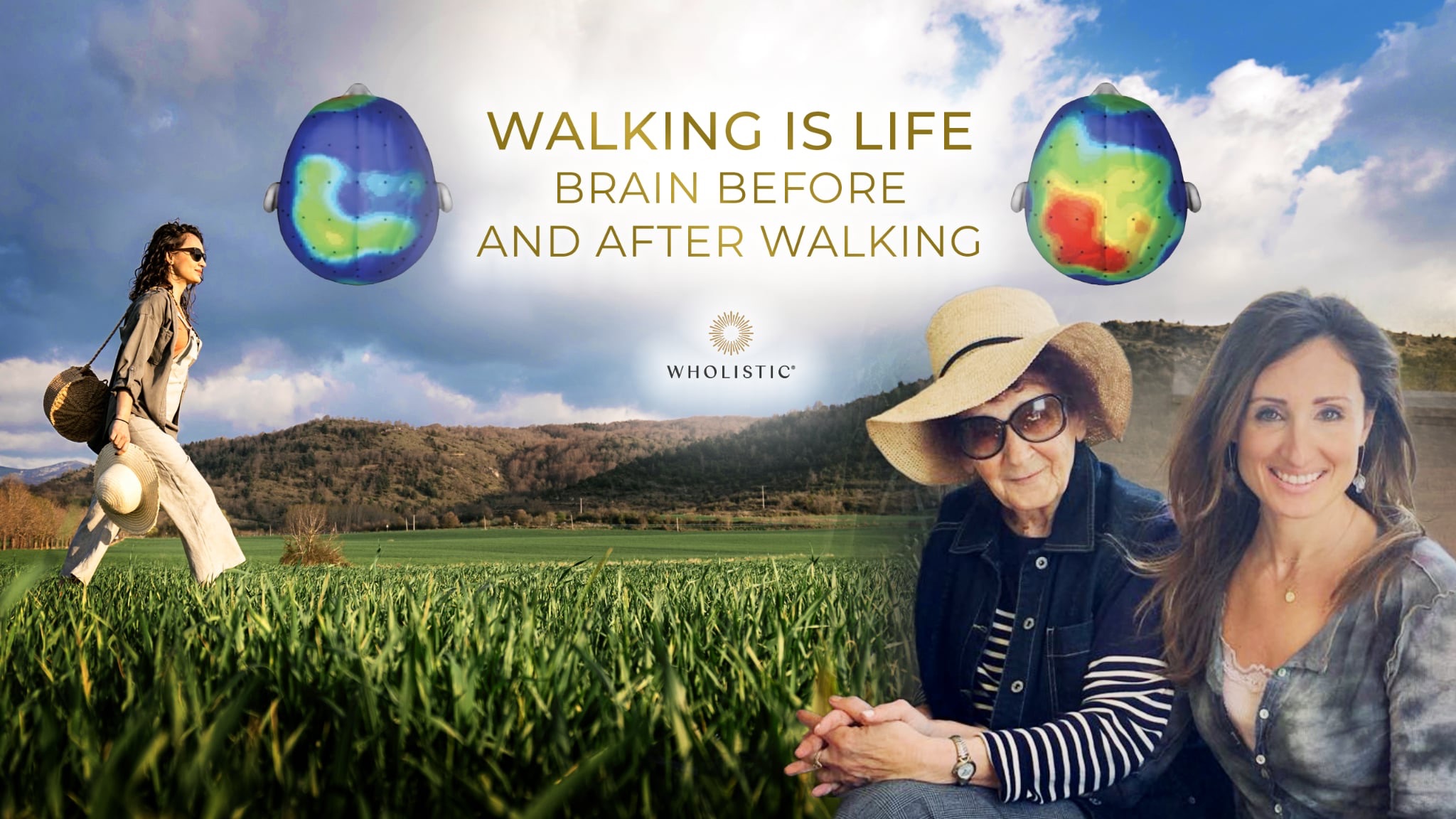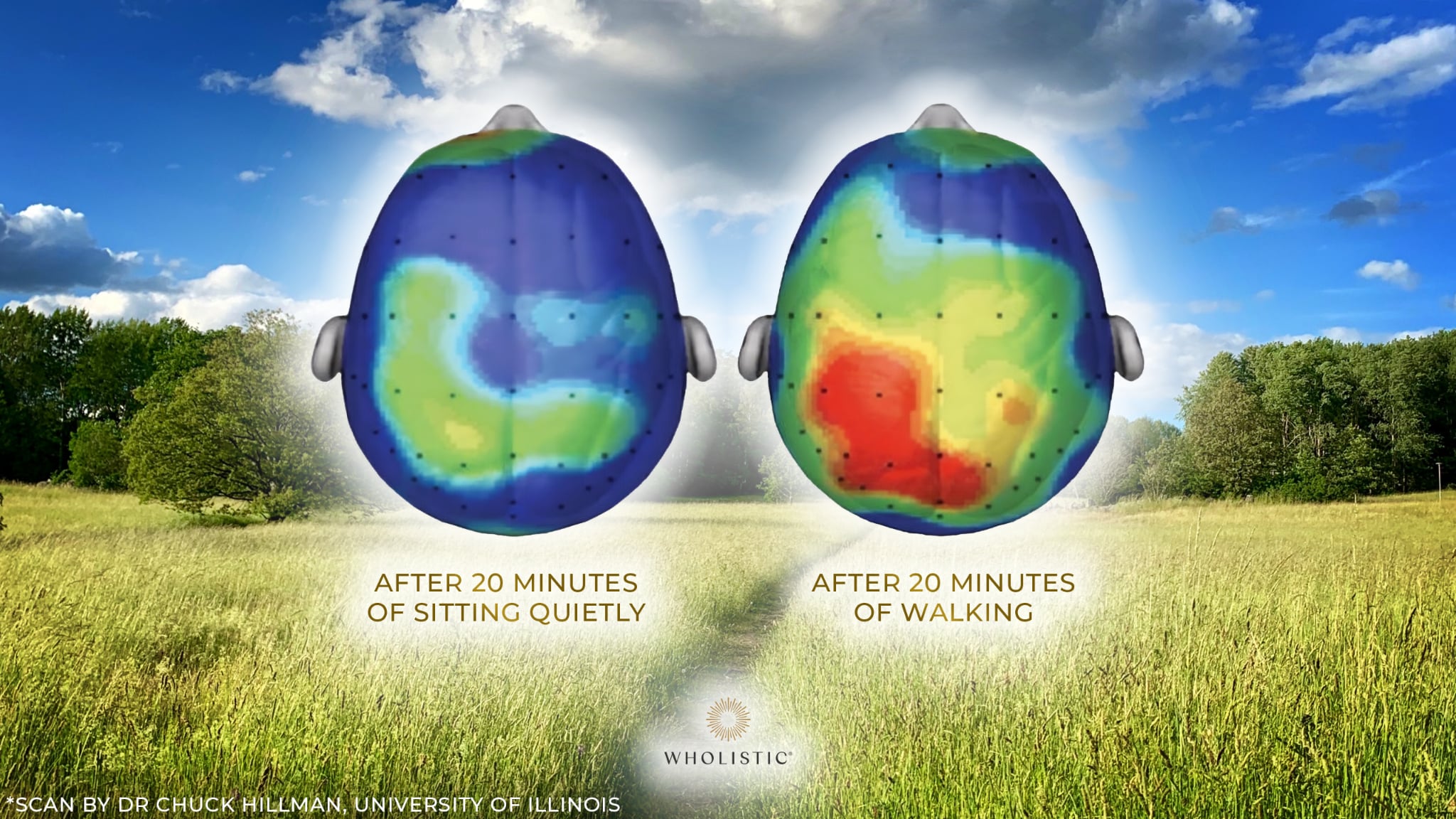Walking is Life

Growing up in Kyiv, Ukraine, walking was an integral part of daily life. It wasn’t just a way to get from one place to another—it was a lifestyle. My grandmother exemplified this, making walking a priority regardless of the weather. For her, it was more than just exercise; it was a way to socialize, connect with nature, and maintain a sense of well-being. Seeing her walk every day, whether in the rain, snow, or sunshine, left a lasting impression on me. She firmly believed that walking was life, and she credited her daily strolls for her healthy joints, clear mind, and youthful attitude.
It wasn’t until I moved to the United States that I realized how different the culture was when it came to walking. Unlike Kyiv, where walking was a natural part of the day, I found that here, it was often an afterthought, something people had to carve out time for rather than a seamless part of life. However, emerging science now validates what my grandmother intuitively knew: walking is one of the most powerful tools for longevity and overall well-being. Studies on Blue Zones regions where people regularly live into their late 90s with no chronic illness show that daily walking is a common thread among these long-lived populations. Walking is not just about movement; it’s about sustaining health, maintaining social connections, and enhancing mental clarity.
Research has uncovered the incredible benefits of walking:
-
Boosts brain function – Walking for just 20 minutes increases blood flow to the brain, enhancing memory, cognitive function, and creativity. It also promotes neurogenesis, the growth of new brain cells, reducing the risk of cognitive decline (Raichlen & Alexander, 2017).
-
Regulates blood sugar – A short walk after meals helps stabilize blood sugar levels, lowering the risk of insulin resistance and type 2 diabetes (DiPietro et al., 2013).
-
Supports cardiovascular health – Walking strengthens the heart, improves circulation, and reduces the risk of high blood pressure, stroke, and heart disease (Agarwal, 2012).
-
Reduces stress and cortisol levels – Walking in nature or engaging in mindful walking helps lower stress hormones, promoting relaxation and emotional balance (Gladwell et al., 2013).
-
Enhances mood – Movement stimulates the release of dopamine and serotonin, uplifting mood and reducing symptoms of depression and anxiety (Mikkelsen et al., 2017).
-
Promotes weight loss and fat burning – Regular walking supports a healthy metabolism, aids in fat loss, and contributes to overall weight management (Hills et al., 2014).
-
Improves joint and bone health – Walking strengthens bones, lubricates joints, and prevents arthritis and osteoporosis (Gregg et al., 2000).
-
Encourages longevity and quality of life – Blue Zone centenarians teach us that an active lifestyle, including daily walking, fosters longevity, independence, and overall well-being (Buettner, 2008).

Recently, I made a commitment to walk a minimum of 10,000 steps per day, and I’ve invited my daughter to join me on this journey. The benefits have been profound. My brain feels clearer, brain fog has dissipated, and I have more energy than ever before. Beyond the physical and mental benefits, this practice has brought something even more valuable quality time with my daughter. Occasionally, my father and husband join us, making these walks a beautiful time of connection and shared moments. It’s a reminder that walking is more than just a health habit; it’s a way to foster relationships and strengthen family bonds, just as Blue Zone communities prioritize daily movement and social engagement.
Walking isn’t just movement, it’s a gateway to better health, stronger relationships, and a deeper appreciation for life. Whether it’s a short stroll or a long walk, the simple act of putting one foot in front of the other has the power to transform our well-being. If my grandmother were here today, she would remind us all: Walking is life.
So, why not start today? Step outside, invite a loved one, or take a mindful solo walk. Every step you take is a step toward a healthier, happier you.
References:
-
Agarwal, S. K. (2012). Cardiovascular benefits of walking. Journal of Clinical Hypertension, 14(11), 787-795.
-
Buettner, D. (2008). The Blue Zones: Lessons for Living Longer From the People Who've Lived the Longest.National Geographic.
-
DiPietro, L., Gribok, A., Stevens, M. S., Hamm, L. F., & Rumpler, W. (2013). Moderate-intensity walking and glycemic control in older people. Journal of the American Geriatrics Society, 61(10), 1816-1819.
-
Gladwell, V. F., Brown, D. K., Wood, C., Sandercock, G. R., & Barton, J. L. (2013). The great outdoors: How a green exercise environment can benefit all. Extreme Physiology & Medicine, 2(1), 3.
-
Gregg, E. W., Pereira, M. A., & Caspersen, C. J. (2000). Physical activity and osteoarthritis prevention. American Journal of Preventive Medicine, 18(4 Suppl), 150-161.
-
Hills, A. P., Dengel, D. R., & Lubans, D. R. (2014). Supporting public health priorities: Recommendations for physical education and physical activity promotion in schools. Progress in Cardiovascular Diseases, 57(4), 368-374.
-
Mikkelsen, K., Stojanovska, L., Polenakovic, M., Bosevski, M., & Apostolopoulos, V. (2017). Exercise and mental health. Maturitas, 106, 48-56.
-
Raichlen, D. A., & Alexander, G. E. (2017). Adaptive capacity: An evolutionary neuroscience model linking exercise, cognition, and brain health. Trends in Neurosciences, 40(7), 408-421.
Discover Three Powerful Ways to Bring Health & Vitality Into Your Everyday Life in This FREE Masterclass by Worldwide Master Practitioner In Wholistic Healing, Elena Bensonoff.
Sign Up for the Masterclass below:





